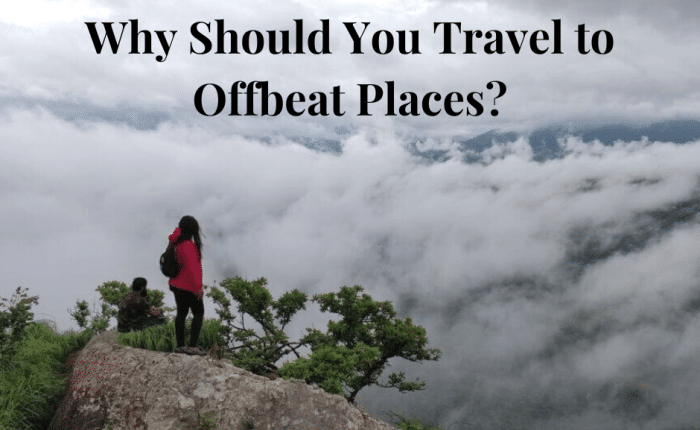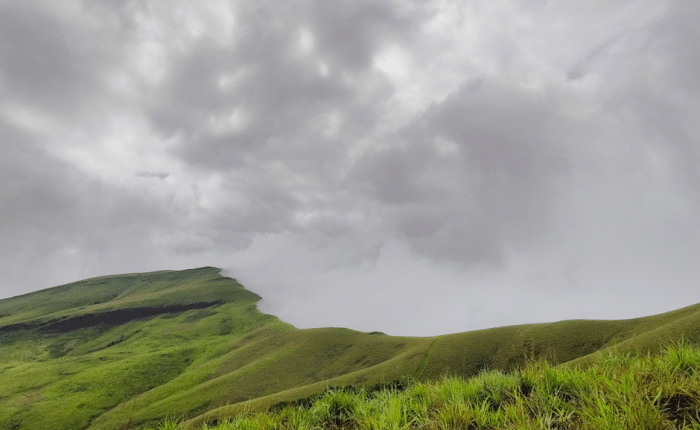Every description of a place depends on who saw it.
I was heading to Dzukou valley in early winter, 1st week of December. That’s when the days are warm and nights are cold. As planned, my friend and I set foot to see a valley that borders the states of Nagaland and Manipur.
From the Nagaland side, there are two routes with varying difficulty levels. One starts from Jakhama village, and the other is through Vishema village. Since we had hired a trekking guide, we took the route recommended by her. Initially, not knowing what terrain we would trek through, we had carried our large backpacks with all the stuff for our fortnight-long trip in Nagaland. But then, our guide asked us to bring just thermals and enough water. “We can buy food and blankets at the peak,” we were told. Anyway, we carried our sleeping bags and some food. We left our luggage at our guide’s house in Jakhama and took a short taxi ride to the start point of the trek.
We started to climb up by 11.30 a.m. The path was unassumingly steep. The entire trail was covered in a thick canopy of trees through which the sun’s rays could hardly penetrate. Although we were climbing at peak noon, it felt post-sunset. The heat generated by the body while burning the calories seemed insufficient to warm us up. The trail only got steeper (almost 80-degree gradient), and we kept thanking our guide for telling us to leave our excess luggage at the base. Then suddenly, the forests opened to the blue skies. Before our eyes could adjust to the bright light, we got our first glimpse of the valley.
I lost control. It was not because of the tiring climb or chilly winds, but because it transported me to a different world. The setting sun had engulfed the green valley. I don’t know if I can express that feeling rightly in words; to put it simply: I was spellbound!

It was a short walk further from there. The trail along the cliff, with the green hills appearing one after the other and the sky changing its shade, kept us going until we finally made it to the guest house for the night’s stay. At 4.30 pm, when we reached there, it got dark with the last ray of white light. But the sky continued to mesmerise us as it turned from red to black in between, illuminating the silhouettes of the surrounding hills. The temperature dropped to a single digit. I was freezing and shivering, but the night sky arrested me in its scintillating saga. So many stars twinkled over the Dzukou valley!

As the night passed, our thermals and sleeping bags didn’t seem enough, and we borrowed additional blankets to help ourselves. I barely slept at night and waited for the alarm to ring at 05.20 am.
At 05.00 am, I was the first to get up and step out to hike down to the valley. The morning light was dim, and I felt the earth crackle below my feet. It did not take me too long to realise that the entire valley was frozen. The temperatures had dropped below zero, and the frozen valley at a distance looked splendid! Soon, the others joined me, and we walked down the valley to witness what was supposed to be the main reason for our trek to Dzukou: the sunrise. We walked past what the locals call the cave and walked over a frozen stream. We clenched bits of frozen waterfalls along the way, and when the sun rose above and shone over the valley, it looked surreal.

The phrase ‘Frozen in time’ was framed after someone saw this place. The frozen dew drops reflected the lights of the rising sun. What I was experiencing from within was a medley of emotions—emptiness, accomplishment, and happiness. No place is more beautiful than this. The entire valley has a peculiar bamboo grass, which gives it a green colour. The same valley looks like it is covered in red/pink during the monsoon; that’s when the lilies endemic to Dzukou valley bloom. Come the winter; the entire valley is painted white in snow.
This is a photo my guide had shared with me of the valley that looked just ten days after we returned. The valley does not fail to mesmerise people, irrespective of the season.

After spending a reasonable amount of time, we returned to the guest house and packed up to head back to Kohima for the hornbill festival. We were a big team of trekkers and backpackers who had all bonded over at the guest house, and together, we took the Vishema route for our return. It was a brilliant decision. We would have missed the magical sky behind the forest canopy if we had taken the same route for our return. The valley looked magical. We were walking on flat land mostly, apart from a short trail of very steep rocks to slide down from. A pre-booked Sumo was waiting to pick us back to Kohima.
I am bluntly ending this post because this place is something better experienced than written about.
About the trek in short:
- I believe what one calls difficult or easy largely depends on an individual’s fitness level and trekking experience. The distance to the peak is short and can be done in 1-1.5 hours if done solo.
- Although people feel the Vishema route is more manageable, in my opinion, we made an excellent decision by walking the Jakhama route while ascending. Since it is steep, climbing would be slow, but the distance is shorter. On the contrary, if we took the Jakhama route to climb down, the gradient would put an enormous strain on our knees, so I suggest taking the Vishema route for the descent.
- Cooked food and potable running water are available at the top, so avoid carrying unwanted luggage.
Check out other blogs related to Dzukou Valley:
Supriya Sahu edited the article.



